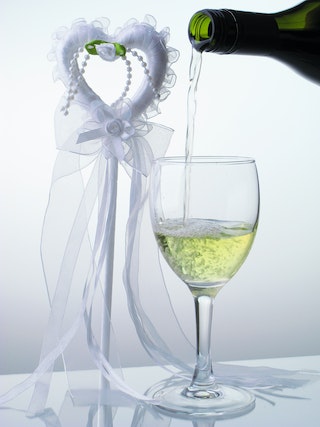When it comes to the world of wines, Riesling stands out as a versatile and intriguing grape variety. Whether you’re an avid wine enthusiast or simply someone looking to enhance their wine knowledge, understanding the nuances between dry and sweet Rieslings can be a delightful journey for your taste buds. In this guide, we will explore the key differences between these two Riesling variants, dive into their distinct flavors, and even uncover their ideal food pairings.
Introduction: The Allure of Riesling
Before we embark on this flavorful journey, let’s take a moment to appreciate the essence of Riesling as a grape variety. Hailing from the picturesque vineyards of Germany’s Rhine region, Riesling grapes are celebrated for their exceptional ability to express terroir and create wines that range from bone-dry to lusciously sweet.
Meet Your Guide: Julia Child
Before we venture into the intricacies of Riesling, allow me to introduce myself. I’m Julia Child, a certified sommelier with years of experience in the world of wines. My mission is to unravel the mysteries of Riesling for you, dear reader, and provide insights that will elevate your wine-tasting experience.
Dry Rieslings: The Crisp Elegance
Our journey begins with dry Rieslings, celebrated for their crispness, elegance, and their unique expression of the terroir where the grapes are grown.

Residual Sugar Levels
Dry Rieslings are characterized by their minimal residual sugar content, typically ranging from bone-dry to off-dry. The absence of sweetness allows their vibrant acidity and mineral notes to shine through.
| Riesling Type | Residual Sugar (grams per liter) |
|---|---|
| Bone-Dry | 0-6 |
| Off-Dry | 6-15 |
Flavor Profile
The flavor profile of dry Rieslings is a delightful symphony of citrus, green apple, and stone fruit notes. They often exhibit pronounced floral and mineral aromas, making each sip a journey through the vineyard.
Food Pairings
Dry Rieslings are incredibly food friendly. Their high acidity and crispness make them a superb match for a variety of dishes, including seafood, poultry, and Asian cuisine. They cut through rich, creamy sauces and complement spicy flavors harmoniously.
| Ideal Pairings | Complementary Flavors |
|---|---|
| Seafood (especially sushi) | Citrus, herbs, and briny notes |
| Roast Chicken | Orchard fruits, rosemary, and thyme |
| Thai or Indian Cuisine | Spices, coconut, and tropical fruits |
Sweet Rieslings: The Luscious Indulgence
Moving along, we step into the world of sweet Rieslings, where the grapes’ natural sweetness is expertly captured in the bottle.
Residual Sugar Levels
Sweet Rieslings, in contrast to their dry counterparts, boast a higher residual sugar content, ranging from medium-sweet to lusciously sweet.
| Riesling Type | Residual Sugar (grams per liter) |
|---|---|
| Medium-Sweet | 15-45 |
| Sweet | 45-85 |
| Lusciously Sweet | 85+ |
Flavor Profile
Sweet Rieslings are a delightful exploration of honeyed apricots, ripe peaches, and tropical fruit flavors. They often exhibit notes of honey, jasmine, and a distinct minerality that balances the sweetness.

Food Pairings
Sweet Rieslings are a dessert in a glass and pair beautifully with a wide array of sweet and savory dishes. They can be enjoyed on their own or as an accompaniment to desserts like apple pie, cheesecake, or fruit tarts.
| Ideal Pairings | Complementary Flavors |
|---|---|
| Foie Gras | Rich, fatty, and savory notes |
| Spicy Thai Cuisine | Spices, chili, and tropical fruits |
| Fruit Desserts | Apricots, honey, and vanilla notes |
The Versatility of Riesling
One of the most enchanting aspects of Riesling is its versatility. Whether you prefer the crisp elegance of a dry Riesling or the luscious indulgence of a sweet one, Riesling has something to offer every palate.
Dry vs. Sweet Rieslings: A Quick Comparison
To summarize the differences between these two Riesling variants, here’s a handy table:
| Aspect | Dry Rieslings | Sweet Rieslings |
|---|---|---|
| Residual Sugar Levels | Bone-Dry to Off-Dry | Medium-Sweet to Lusciously Sweet |
| Flavor Profile | Citrus, Green Apple, Minerality | Apricots, Peaches, Honey, Jasmine |
| Ideal Food Pairings | Seafood, Poultry, Asian Cuisine | Foie Gras, Spicy Dishes, Desserts |
Conclusion: Explore and Savor
As we conclude our journey through the world of Riesling, I encourage you to explore both dry and sweet Rieslings to truly appreciate the diversity of this remarkable grape variety. Whether you’re enjoying a crisp glass of dry Riesling with seafood or indulging in the sweetness of a dessert Riesling, each sip offers a unique and captivating experience.
Riesling’s ability to reflect its terroir, from the mineral-rich soils of Germany to the sun-kissed vineyards of California, is a testament to its exceptional character. So, raise your glass and savor the flavors of Riesling, a wine that truly has something for everyone.




